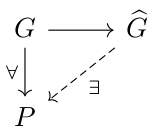TANT 20 - Class field theory in terms of ideals
Hello there! These are notes for the twentieth class of the course " Topics in algebra and number theory " held in Block 4 of the academic year 2017/18 at the University of Copenhagen . In the previous lecture we used the idelic class group \( C_K \) to give the statement of the main theorem of global class field theory. Moreover, we related this group to the "traditional" class group \( \mathfrak{C}_K \) by proving that \[ \mathfrak{C}_K \cong \frac{C_K}{(\widehat{\mathcal{O}_K^{\times}} \cdot \mathbb{I}_{K,\infty}) \cdot K^{\times}}. \] In this lecture we will use this isomorphism to state the main theorem of global class field theory in terms of ideal classes. In order to do so, we need to prove that the groups \( \overline{U}_K^{\mathfrak{m}} \subseteq C_K \) that we defined in the last lecture are of finite index in \( C_K \), which is what we will do in the second section.





